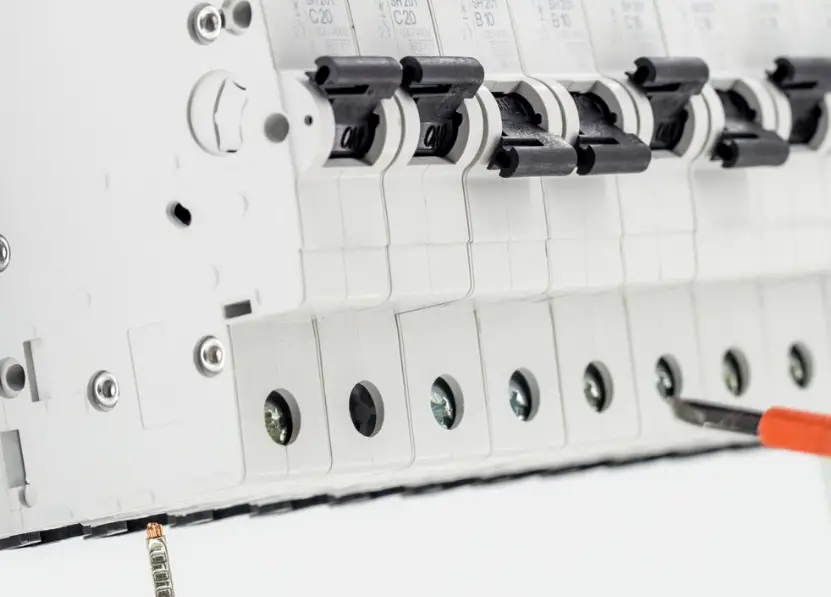Taking on the Challenges in Switchboard Design: A Step-by-Step Guide

Switchboard design is a complex process that requires careful consideration of various factors to ensure optimal performance and safety. In this guide, we’ll explore the challenges commonly encountered in switchboard design and provide step-by-step solutions to overcome them.
Step 1: Understanding Design Requirements
Before starting the design process, it is crucial to understand the project’s specific requirements. This includes determining the intended application, voltage levels, current capacity, and environmental conditions.
By clearly defining these requirements upfront, designers can tailor their approach to effectively meet the project’s needs. Additionally, ensuring the switchboard design adheres to relevant industry standards such as UL 891 or IEC 61439 guarantees compliance and safety.
Step 2: Conducting a Site Survey
A thorough site survey is essential for gathering crucial information about the installation environment.
This includes assessing available space, accessibility constraints, and any existing infrastructure that may impact the switchboard design.
By conducting a comprehensive site survey, designers can identify potential challenges early on and proactively develop strategies to address them.
Additionally, conducting a detailed site survey allows designers to evaluate environmental factors such as temperature, humidity, and exposure to corrosive elements, which can influence component selection and material compatibility.
Step 3: Selecting the Right Components
Choosing the right components is critical for ensuring the switchboard’s reliability and performance.
This includes selecting appropriate circuit breakers, busbars, meters, and other accessories based on the project requirements. Designers should consider factors such as load capacity, interrupting rating, and compatibility with existing equipment to make informed decisions.
Effective switchboard design and layout are essential for optimizing performance and ensuring seamless operation. By meticulously selecting the right components and arranging them in an efficient layout, designers can enhance reliability, minimize downtime, and facilitate ease of maintenance.
Step 4: Addressing Space Constraints
Space constraints are typical in switchboard design, especially in retrofit projects or compact installations. Designers must carefully optimize the layout to maximize space utilization while ensuring adequate clearance for maintenance and ventilation.
This may involve exploring compact equipment options, modular designs, or creative mounting solutions to overcome space limitations effectively.
Step 5: Managing Thermal Considerations
Heat dissipation is a critical aspect of switchboard design, particularly in high-current applications. Designers must carefully consider thermal management strategies to prevent overheating and ensure long-term reliability.
This may involve incorporating ventilation systems, heat sinks, or thermal insulation materials into the design to enhance cooling efficiency and mitigate the risk of thermal issues.
Step 6: Ensuring Compliance with Standards
Compliance with industry standards and regulations regarding switchboard design is non-negotiable.
Designers must stay up-to-date with relevant standards such as UL 891, IEC 61439, and NEC requirements to ensure the switchboard’s safety and reliability.
This includes adhering to specific guidelines for component selection, insulation, wiring, and labeling to achieve compliance effectively.
Step 7: Conducting Comprehensive Testing
Thorough testing is essential to validate the switchboard’s performance and reliability before deployment. This includes conducting electrical tests, insulation resistance tests, and functional tests to verify proper operation under various conditions. By conducting comprehensive testing, designers can identify any issues early on and address them proactively to ensure the switchboard meets performance expectations.
Step 8: Documenting Design Decisions
Documenting design decisions and specifications ensures clarity and accountability throughout the switchboard design process. Designers should maintain detailed records of component selections, layout diagrams, test results, and compliance documentation for future reference. This documentation is a valuable reference tool for maintenance, troubleshooting, and future modifications.
In conclusion, the intricate process of switchboard design demands detailed planning, precise execution, and specialized knowledge.
By adhering to the systematic approach outlined in this guide, designers can confidently tackle the complexities of switchboard design.
From understanding design requirements to selecting the right components and conducting thorough site surveys, each step contributes to creating robust and reliable switchboard solutions. Emphasizing attention to detail and adherence to industry standards ensures that the final design meets the stringent performance, reliability, and safety criteria expected in commercial and industrial settings.
By implementing these best practices, designers can overcome challenges and deliver switchboard solutions that exceed expectations, setting the foundation for efficient and resilient electrical systems.
